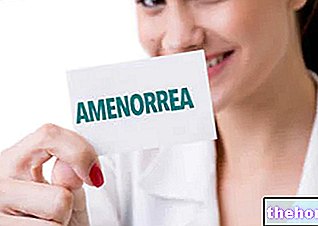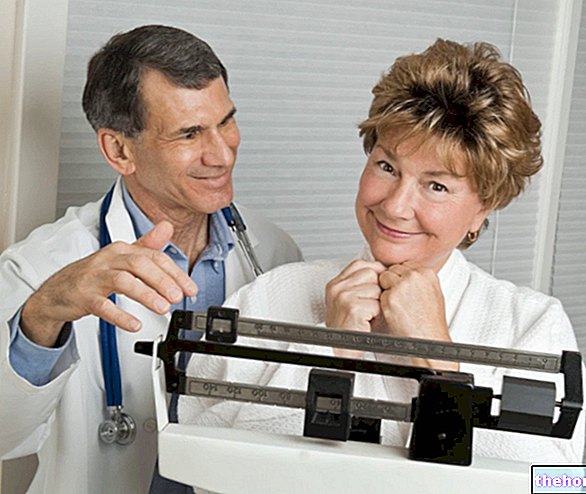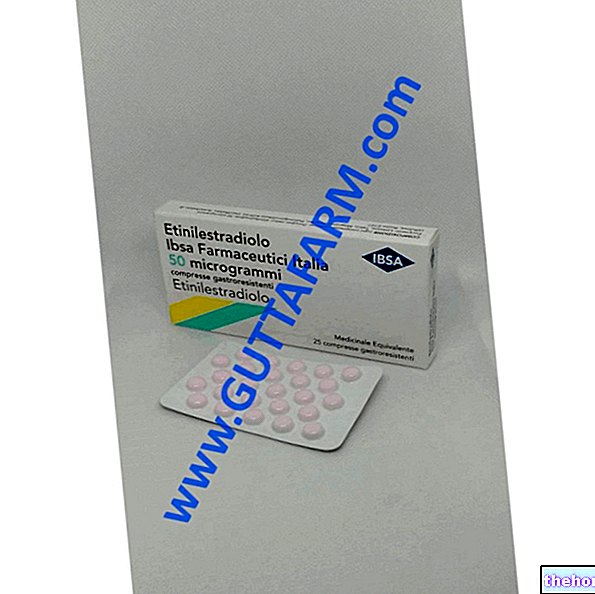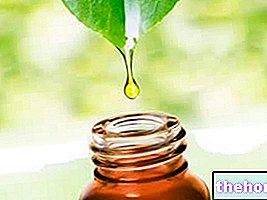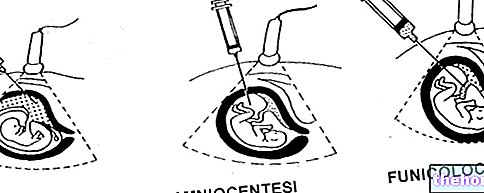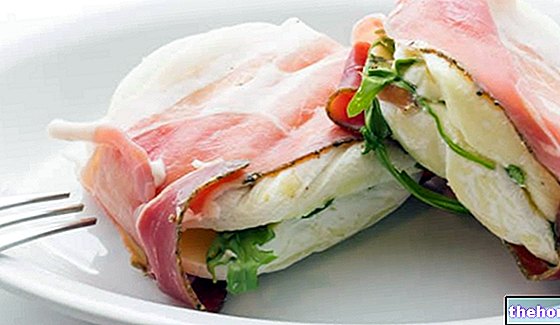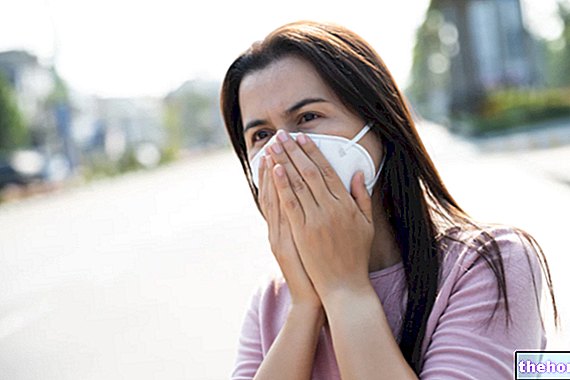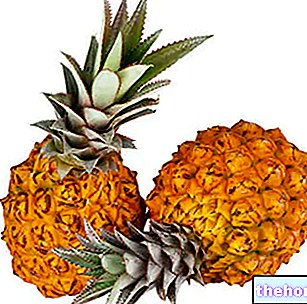The climacteric is a period of about 7-10 years between premenopause (when the cycle is irregular, it also lasts 6-8 years) and menopause (total absence of a menstrual cycle for at least 12 months).

The transition from fertility to menopause is caused by the reduction in the hormonal flow of estrogen; the latter is also held responsible for the climacteric symptoms.
Not all women who enter menopause suffer from climacteric syndrome but, on Western women, statistics show an "incidence equal to 75%.
The reduction of estrogen is considered a negative factor for the health of the woman; it becomes more sensitive to various diseases of the bone, metabolic, vascular, tumor type, etc.
On the other hand, it must be specified that the danger is NOT associated with the climacteric syndrome, but with the basic hormonal modification. It means that the intensity and duration of symptoms are not directly correlated to the increased risk / incidence of female diseases in old age. .
The material published is intended to allow quick access to general advice, suggestions and remedies that doctors and textbooks usually dispense for the treatment of Climacteric Syndrome; such indications must in no way substitute the opinion of the attending physician or other health specialists in the sector who are treating the patient.
What to do
- First of all, it is necessary to recognize the first "signs" of entering menopause.
- They can also occur many years before the "definitive entry:
- Menstrual changes.
- Hot flashes.
- Night sweats.
- Fatigue.
- Headache.
- Palpitations and anxiety.
- Irritability.
- Sleep disorders.
- Less frequently and later:
- Joint and muscle pains.
- Urinary disorders (such as incontinence).
- Depression.
- Difficulty concentrating and memory deficits.
- Vaginal dryness, decreased libido and painful sexual intercourse.
- Increased vaginal pH.
- Vulvar atrophy.
- Dryness of the skin and hair.
- Weight gain and fat redistribution (from gynoid to android).
- Complications such as:
- Osteoporosis.
- Primary arterial hypertension.
- Increased cardiovascular risk.
- Increased risk of breast and cervical cancer.
- Contact your general practitioner or gynecologist, who will analyze the situation and assess the relevance of drug therapy.
- If the specialist agrees, drug therapy can be associated with:
- Diet.
- Motor activity program.
- Some natural herbal remedies.
What NOT to do
- Ignore the signs and symptoms of climacteric syndrome: Starting treatment early can be a major factor in reducing severity.
- Do not contact your GP or gynecologist, especially if the menopause is early, late or intense / strange symptoms appear.
- Do not follow drug therapy.
- Do not adopt advice regarding lifestyle, diet and other remedies.
What to eat
- The basic principles of the climacteric syndrome diet are:
- If you are overweight, lose weight thanks to a low calorie plan at 70% of normal calories.
- Provide calcium and vitamin D to counteract osteoporosis.
- Provide beneficial fatty acids to counteract the increase in cholesterol, triglycerides, blood pressure and to reduce any complications of type 2 diabetes mellitus.
- Promote the intake of potassium and magnesium, and decrease that of sodium: counteracts the onset of hypertension.
- Consume foods with a low or medium glycemic index, with moderate portions (medium glycemic load), to prevent the onset of hyperglycemia, type 2 diabetes mellitus and hypertriglyceridemia.
- Promote the intake of polyphenolic antioxidants and phytosterols to reduce symptoms (phytoestrogens), reduce oxidative stress, prevent the onset of tumors and optimize metabolic parameters (lipids, blood sugar, etc.).
- In summary, increase the intake of:
- Foods rich in phytosterols and lecithins: phytosterols are the alter ego of cholesterol in the plant world. From the metabolic point of view, they exert a diametrically opposite effect and favor the reduction of cholesterolemia. Remember that some phytosterols simulate the effect of female estrogens, although the extent of this reaction is not entirely clear. They are foods rich in phytosterols: soy and soybean oil, many oil seeds, red clover, cereal germ, fruit, vegetables and some dietary foods (for example added yoghurts ).
Lecithins are molecules able to bind both fatty and aqueous compounds; for this they are also used as additives. In the digestive tract they bind cholesterol and bile salts reducing their absorption. At the metabolic level they improve the good-bad cholesterol ratio and lower the total. They are rich in lecithins: soy and other legumes, egg yolk (but it is not recommended in case of high cholesterol), vegetables and fruit. - Vitamin D: essential for bone metabolism, hormone production and immune system support; it is abundant in fishery products, fish oil, liver and egg yolk.
- Omega 3: they are eicosapentaenoic acid (EPA), docosahexaenoic (DHA) and alpha linolenic (ALA). They play a protective role against all metabolic diseases, including high blood pressure. The first two are biologically very active and are mainly contained in: sardine, mackerel, bonito, sardinia, herring, alletterato, tuna belly, garfish, seaweed, krill, etc. The third, on the other hand, is less active but constitutes a precursor of EPA; it is mainly contained in the fat fraction of certain foods of vegetable origin or in oils of: soy, linseed, kiwi seed, grape seed etc.
- Omega 6: they are linoleic acid (LA), gamma linoleic acid (GLA), linolenic dihomogamma (DGLA) and arachidonic acid (AA). They have a similar function to the previous ones, but are more abundant in the diet. D "on the other hand, l" nutritional balance requires that no more than 400% of omega 3 be taken. They are mainly contained in: sunflower seeds, wheat germ, sesame, almost all dried fruit (for example peanuts), corn germ and related oils.
- Potassium: increasing its intake in the diet decreases blood pressure and increases the urinary excretion of sodium. By reaching a dose of 4000mg / day, it is possible to reduce blood pressure up to 4mmHg. It is contained in all foods, with the exception of seasoning fats. However, the foods that are most suitable for increasing its intake in the diet are fresh and raw vegetables and fruit.
- Magnesium: like the previous one, it promotes the lowering of blood pressure. Doses of 120-973mg / day (over 200% of the requirement) have been shown to be effective in reducing hypertension. It is mainly contained in foods of plant origin; in particular: whole grains and bran, oil seeds, cocoa, vegetables, etc.
- Calcium: it is the basis of bone maintenance. Guaranteeing its intake reduces the risk of osteoporosis. It is mainly contained in milk and derivatives, dried fruit and legumes.
NB. The consumption of extra virgin olive oil rich in omega 9 fatty acids is inversely proportional to high blood pressure, but this does not necessarily depend on oleic acid; in fact, this seasoning fat is also rich in polyunsaturated fatty acids, vitamin E, polyphenols and phytosterols etc.
- Foods rich in plant antioxidants: the most common are polyphenolic in nature (simple phenols, flavonoids, tannins). Some fall into the group of the aforementioned phytosterols (isoflavones). They behave more or less like vitamins. They lower oxidative stress and optimize lipoprotein metabolism; appear to correlate with a reduction in total and LDL cholesterol. They are very rich in polyphenols: vegetables (onion, garlic, citrus fruits, cherries, etc.), fruit and relative seeds (pomegranate, grapes, berries, etc.), wine, oil seeds, coffee, tea, cocoa, legumes and whole grains, etc.
- Small portions of foods with a prevalence of carbohydrates: cereals and derivatives (pasta, bread, etc.), potatoes, shelled legumes, very sweet fruit.
- Among the foods rich in carbohydrates, prefer those with a low glycemic index: wholemeal or enriched with fiber (for example those added in inulin), whole legumes, little or medium sweet fruit.
- Reduce the glycemic load of meals: increasing the number (about 5-7 in all), reducing the total caloric intake, decreasing the portions especially of foods rich in carbohydrates (it is advisable to divide the carbohydrates into all meals apart from a possible snack evening).
- Reduce the glycemic index of meals: increasing the amount of low-calorie vegetables rich in fiber: radicchio, lettuce, zucchini, fennel, etc. Enriching all dishes with low fat and protein (they slow down digestion and the "absorption of sugars and avoid" glycemic surge).
What NOT to Eat
The excesses of:
- Sodium: directly and indirectly related to high blood pressure, it should be eliminated from the diet. We are talking about added sodium, i.e. that present in table salt (sodium chloride) and used as a preservation medium for: cured meats, sausages, canned meat, canned fish, pickled or salted foods, etc. They are also rich in them: salty snacks, fast food and junk food in general.
- Saturated and hydrogenated fats, the latter especially in trans conformation: they are related to an increase in blood pressure, cholesterolemia and systemic inflammation. Saturated fats are mainly present in: fatty cheeses, cream, fatty cuts of fresh meat, sausages and cured meats, hamburgers, frankfurters, palm kernel and palm oil, other bifractionated oils, etc. Hydrogenated fats, which may have a high percentage of trans-conformation chains, are mainly contained in: hydrogenated oils, margarines, sweet snacks, salty snacks, packaged baked goods etc.
- Foods rich in cholesterol: paradoxically they seem to have a less hypercholesterolemic effect than the previous category but are not recommended anyway. They are abundant in cholesterol: egg yolk, full-fat and aged cheeses, offal (brain, liver and heart), crustaceans (for example shrimps) and certain bivalve molluscs (for example mussels).
- Alcohol: it is a molecule directly involved in the pathological increase in blood pressure. All beverages are involved, from the lightest to spirits. However, it must be specified that one or two units of red wine per day are not considered cardiovascular risk factors, for example. On the contrary, thanks to the concentration of polyphenols, they seem to have a preventive function.
- Excessive load and glycemic index: they favor the increase of blood sugar and triglycerides. It is advisable to reduce the portions of sweets and snacks, pasta, bread, pizza and very sweet fruit. The choice of foods must prefer those rich in fiber, fresh and well hydrated.
Natural Cures and Remedies
- Motor activity: moderate and possibly aerobic, it has several beneficial effects such as:
- It prevents many serious complications (osteoporosis, metabolic and cardiovascular diseases).
- Promotes emotional balance.
- Normalizes physiological stimuli.
- Phytotherapy: is able to reduce the symptoms of climacteric syndrome. The most used plants are:
- Black Cohosh (Black Cohosh Racemosa): rhizomes and roots are used. Contains triterpene glycosides (actein and cimicifugoside), phenolic acids, quinolizidine alkaloids, flavonoids and resins (cimicifugina). It reduces the hormonal levels of LH (luteinizing) in the blood, but not those of the FSH (stimulating follicle); counteracts bone mineral loss.
- Chaste tree (Vitex agnus-castus): the ripe fruit is used. Contains iridoid glycosides (aucubin, agnoside), flavonoids (caticin, vitexin, isovitexin), terpenes (vitexylactone) and alkaloids (vaticin). It inhibits prolactin secretion and increases LH and FSH levels.
- Food supplements: not all of them have shown the same effectiveness in relieving symptoms. The most used are:
- Soy (Glycine max): thanks to its isoflavones it reduces hot flashes, sleep disturbances, irritability, depression, the incidence of vasomotor manifestations and total cholesterol levels (thanks to essential fats and lecithins). It has no side effects and probably helps prevent breast and uterine cancers.
- Red clover (Trifolium pratense): has more or less the same effects as soy.
- Dioscorea (Dioscorea villosa) dry extract: thanks to the concentration of diosgenin it optimizes the relationship between estrogen and progesterone.
Pharmacological treatment
The drug therapy used against climacteric syndrome is hormone replacement. It is based on synthetic estrogen and progesterone. It is used to reduce symptoms and prevent complications (especially osteoporosis).
However it shows some side effects, such as: nausea, tendency to thrombotic phenomena, hypertension and increased incidence of uterus and breast cancer.
- Estradiol (for example Ephelia, Climara, Estrofem).
- Estriol (for example Ovestin).
- Medroxyprogesterone Acetate (e.g. Farlutal, Provera, Premia).
- Progesterone (e.g. Prontogest, Prometrium).
- Ethinylestradiol (e.g. Ethinylestradiol Amsa).
- Tibolone (e.g. Livial).
Other methods are based on the administration of:
- Selective estrogen receptor inhibitors:
- Raloxifene (e.g. Raloxifene Teva, Optruma, Evista).
- Tamoxifen (for example Nolvadex, Tamoxifene AUR, Nomafen).
- SSRI drugs or selective serotonin reuptake inhibitors), useful for the control of vasomotor symptoms, exert an important antidepressant effect:
- Venlafaxine (for example Efexor).
- Paroxetine (for example Sereupin, Serestill, Eutimil, Daparox).
- Other antidepressant drugs:
- Clonidine (e.g. Catapresan, Isoglaucon).
Prevention
There is no preventive form against climacteric syndrome; on the other hand, it is possible to reduce the worsening of symptoms:
- Recognizing symptoms early.
- Immediately starting drug therapy and natural remedies under medical advice.
Medical Treatments
There are no medical treatments aimed at reducing the symptoms of climacteric syndrome.


